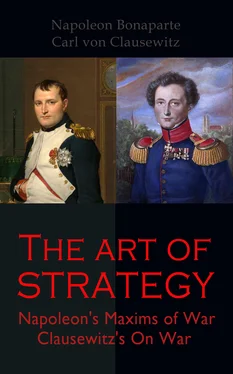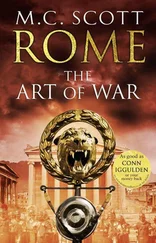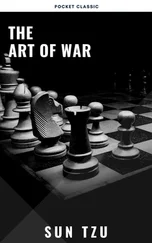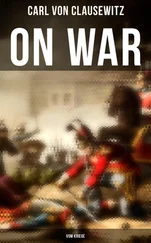1 ...8 9 10 12 13 14 ...53 Table of Contents
It should be laid down as a principle, never to leave intervals by which the enemy can penetrate between corps formed in order of battle, unless it be to draw him into a snare.
In the campaign of 1757, the Prince of Lorraine, who was covering Prague with the Austrian army, perceived the Prussians threatening, by a flank movement, to turn his right. He immediately ordered a partial change of front by throwing back the infantry of that wing, so as to form a right angle with the rest of the line. But this manœuvre being executed in presence of the enemy, was not effected without some disorder. The heads of the columns having marched too quick, caused the rear to lengthen out, and when the line was formed to the right, a large interval appeared at the salient angle. Frederick, observing this error, hastened to take advantage of it. He directed his centre corps, commanded by the Duke of Bevern, to throw itself into this opening, and by this manœuvre decided the fate of the battle.
The Prince of Lorraine returned to Prague, beaten and pursued, with the loss of sixteen thousand men and two hundred pieces of cannon.
It should be observed at the same time, that this operation of throwing a corps into the intervals made by an army in time of battle, should never be attempted unless you are at least equal in force, and have an opportunity of outflanking the enemy on the one side or the other; for it is then only you can hope to divide his army in the centre, and insulate the wings entirely. If you are inferior in number, you run the risk of being stopped by the reverses, and overpowered by the enemy’s wings, which may deploy upon your flanks and surround you.
It was by this manœuvre that the Duke of Berwick gained the battle of Almanza, in the year 1707, in Spain.
The Anglo-Portuguese army, under the command of Lord Galloway, came to invest Villena. Marshal Berwick, who commanded the French and Spanish army, quitted his camp at Montalegre, and moved upon this town to raise the siege. At his approach, the English general, eager to fight a battle, advanced to meet him in the plains of Almanza. The issue was long doubtful. The first line, commanded by the Duke of Popoli, having been broken, the Chevalier d’Asfeldt, who had charge of the second, drew up his masses with large intervals between them; and when the English, who were in pursuit of the first line, reached these reserves, he took advantage of their disorder to attack them in flank and defeated them entirely.
Marshal Berwick, perceiving the success of this manœuvre, threw open his front, and deploying upon the enemy’s flanks, while the reserve sustained the attack in front, and the cavalry manœuvred in their rear, obtained a complete victory.
Lord Galloway, wounded and pursued, collected with difficulty the remains of his army, and took shelter with them in Tortosa.
Table of Contents
Encampments of the same army should always be formed so as to protect each other.
At the battle of Dresden, in the campaign of 1813, the camp of the allies, although advantageously placed upon the heights on the left bank of the Elbe, was nevertheless extremely defective, from being traversed longitudinally by a deep ravine, which separated the left wing completely from the centre and the right. This vicious arrangement did not escape the penetrating eye of Napoleon. He instantly directed the whole of his cavalry and two corps of infantry against the insulated wing, attacked it with superior numbers, overthrew it, and took ten thousand prisoners, before it was possible to come to its support.
Table of Contents
When the enemy’s army is covered by a river, upon which he holds several têtes de pont , do not attack in front. This would divide your force and expose you to be turned. Approach the river in echelon of columns, in such a manner that the leading column shall be the only one the enemy can attack, without offering you his flank. In the meantime, let your light troops occupy the bank, and when you have decided on the point of passage, rush upon it and fling across your bridge. Observe that the point of passage should be always at a distance from the leading echelon, in order to deceive the enemy.
If you occupy a town or a village on the bank of a river, opposite to that held by the enemy, it is an advantage to make this spot the crossing point, because it is easier to cover your carriages and reserve artillery, as well as to mask the construction of your bridge, in a town, than in the open country. It is also a great advantage to pass a river opposite a village, when the latter is only weakly occupied by the enemy; because as soon as the advanced guard reaches the other side, it carries this post, makes a lodgment, and by throwing up a few defensive works, converts it easily into a tête de pont . By this means, the rest of the army is enabled to effect the passage with facility.
Table of Contents
From the moment you are master of a position which commands the opposite bank, facilities are acquired for effecting the passage of the river; above all, if this position is sufficiently extensive to place upon it artillery in force. This advantage is diminished, if the river is more than three hundred toises (or six hundred yards) in breadth, because the distance being out of the range of grape, it is easy for the troops which defend the passage to line the bank and get under cover. Hence it follows that if the grenadiers, ordered to pass the river for the protection of the bridge, should reach the other side, they would be destroyed by the fire of the enemy; because his batteries, placed at the distance of two hundred toises from the landing, are capable of a most destructive effect, although removed above five hundred toises from the batteries of the crossing force. Thus the advantage of the artillery would be exclusively his. For the same reason, the passage is impracticable, unless you succeed in surprising the enemy, and are protected by an intermediate island, or, unless you are able to take advantage of an angle in the river, to establish a crossfire upon his works. In this case, the island or angle forms a natural tête de pont , and gives the advantage in artillery to the attacking army.
When a river is less than sixty toises (or one hundred and twenty yards) in breadth, and you have a post upon the other side, the troops which are thrown across derive such advantages from the protection of your artillery, that, however small the angle may be, it is impossible for the enemy to prevent the establishment of a bridge. In this case, the most skilful generals, when they have discovered the project of their adversary, and brought their own army to the point of crossing, usually content themselves with opposing the passage of the bridge, by forming a semicircle round its extremity, as round the opening of a defile, and removing to the distance of three or four hundred toises from the fire of the opposite side.
Frederick observes, that “the passage of great rivers in the presence of the enemy is one of the most delicate operations in war.” Success on these occasions depends on secrecy, on the rapidity of the manœuvres, and the punctual execution of the orders given for the movements of each division. To pass such an obstacle in presence of an enemy, and without his knowledge, it is necessary not only that the previous dispositions should be well conceived, but that they should be executed without confusion.
In the campaign of 1705, Prince Eugene, of Savoy, wishing to come to the assistance of the Prince of Piedmont, sought for a favorable point at which to force the passage of the Adda, defended at that time by the French army, under the command of the Duke de Vendome.
Читать дальше












